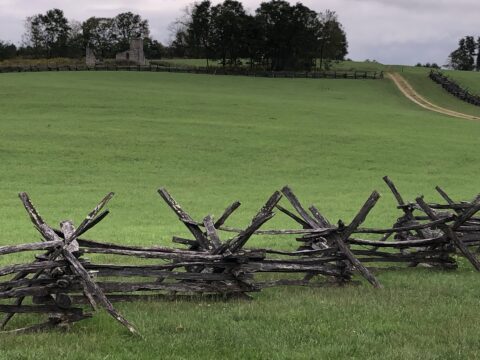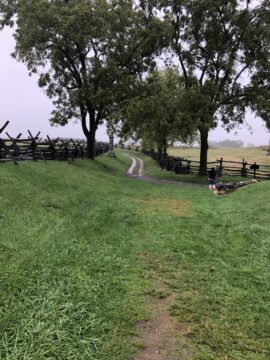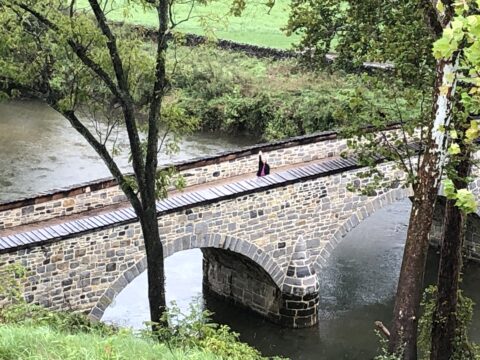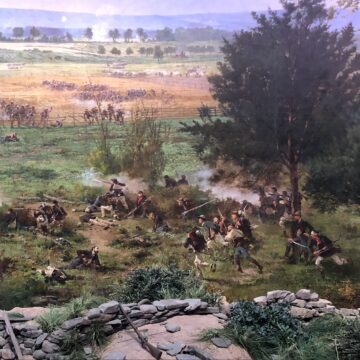I tagged along with my sister on a trip to Gettysburg, Pennsylvania. She is an avid history reader, focusing mostly on Civil War history. It was her dream to visit the biggest battlefield of them all, Gettysburg. When she said she was going, I asked if I could tag along. I love history, and a history vacation seemed ideal. It was that and more.
I’ll start the narrative at Harper’s Ferry in West Virginia. It sits at the confluence of the Potomac and Shenandoah Rivers. A major road went through there, along with a major railroad line. Also there, a very large arsenal. Whoever held this strategic position would have an advantage for getting men and supplies to the battle front.
In October 1859, John Brown led a raid on Harpers Ferry to take the arsenal. The idea was that his action would spur slaves everywhere to rise up against their owners and join in his revolution. He brought along 1,000 pikes (knives on the end of spears) that slaves would use until he could train them to use firearms and cannons. The soldiers finally cornered him, his son, and the last few of his followers in a building before capturing him. The whole incident lasted 36 hours. His grand idea died with him in December when he was hung.

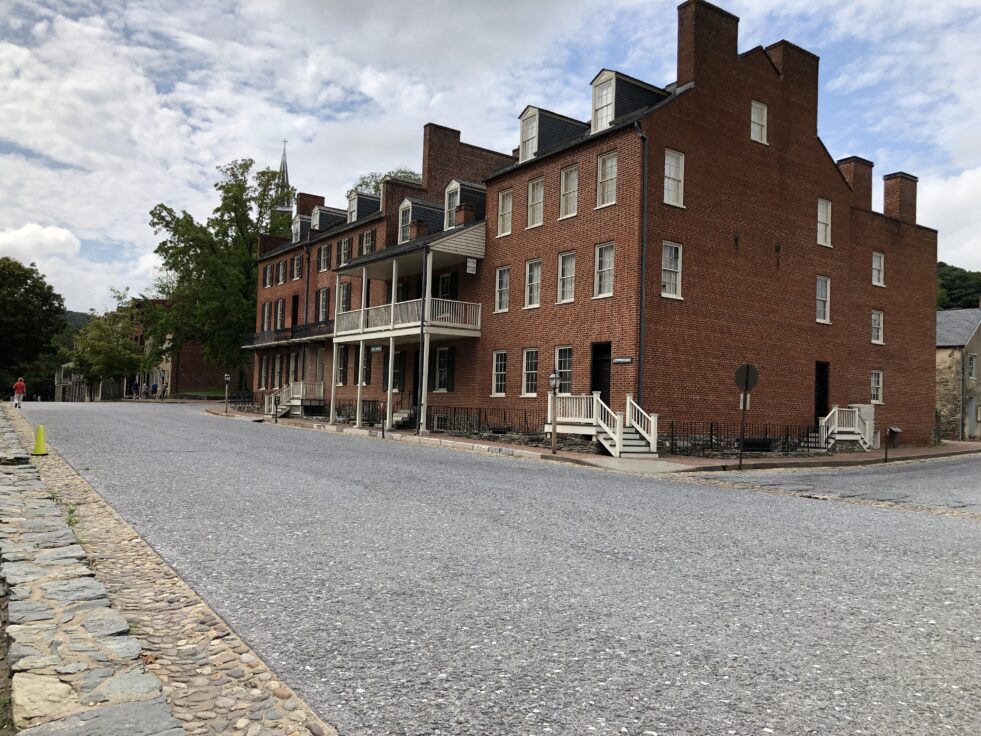
When Virginia seceded from the Union, the Union troops stationed at Harpers Ferry tried to burn down the armory. Rebel forces were too close for comfort. The townspeople put out some of the flames and saved part of it. When the Confederates took it over, they hauled all the munitions-making equipment to the Richmond armory, and blew up the buildings before they left. The fort changed hands at least eleven times during the Civil War.
In 1862, the Union commander at Harpers Ferry, Col. Dixon Miles, was an old man, sent to the post in disgrace after his actions at the first Bull Run battle. His job was to train new recruits. By the time the Confederates showed up, his troops had less than three weeks of training. His orders from Union General McClellan to were to hold the fort to the last man, but his 14,200 men had no experience for what was to come.
Robert E. Lee wanted Harper’s Ferry. It was part of his plan to invade the north. He divided his army into five parts and sent them to different towns in Maryland and West Virginia. He sent Stonewall Jackson to take Harpers Ferry. He sent along two other divisions to make a three pronged attack on the fort.
Somehow, a paper with his invasion strategy plans were wrapped around two cigars and lost or discarded on the side of the road. A Union soldier found them and turned them in to his superiors. General McClellen was delighted to find out Lee had split his army and devised a way to pick off each part one at a time. They could take the entire Confederate army and end the war.
In the meantime, the Confederates placed cannons on the hills around Harpers Ferry and let loose. In trying to negotiate a surrender, Col. Miles was badly wounded. He died the next day and his second in command took over. General White completed the terms of capitulation and surrendered along with over 12,000 Union troops. It was the largest surrender of US soldiers until Bataan in World War II.
While Stonewall Jackson and those under his command were ransacking Harpers Ferry, he received a urgent message to rejoin the rest of the army. General Lee had discovered his written plans were missing and knew his army was vulnerable. He ordered all units to regroup at Antietam Creek near Sharpsburg.
Generals D.H. Hill and James Longstreet ran into Union resistance on their way to Lee and suffered heavy losses. Lee almost decided to retreat back to Virginia until he got word that Stonewall had taken Harpers Ferry. Not wanting to waste that victory, he regrouped as many as he could and faced McClellan’s forces at Antietam.
A cornfield lay between the two armies that, instead of being a Field of Dreams, became a field of nightmares. One army advanced through the cover of the cornfield only to be met with gunfire when they emerged. The other army went into the cornfield and met the same fate. In just eight hours, there were over 15,000 casualties across that flattened cornfield.
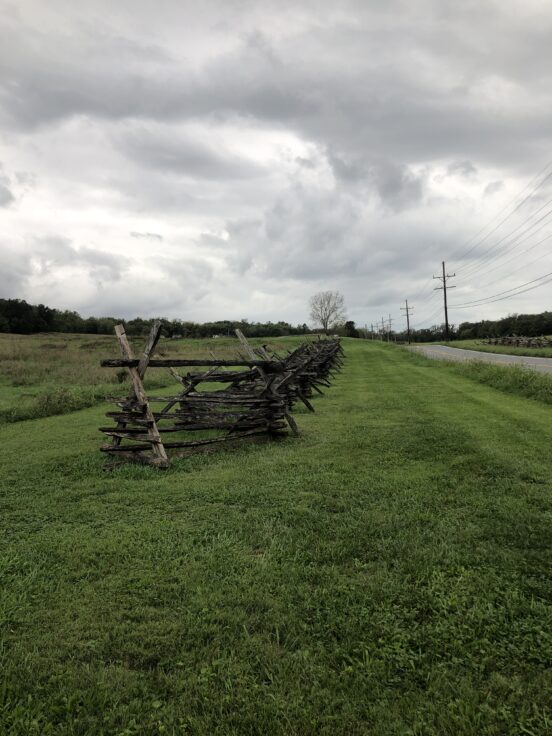
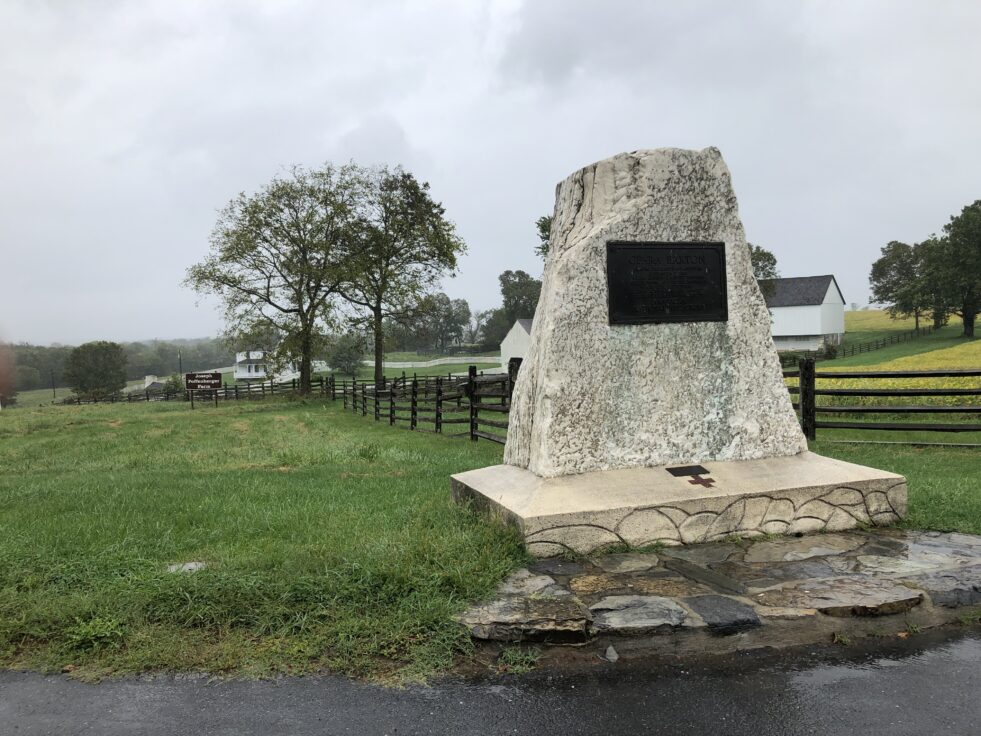
Near there was a farm lane known as the Sunken Road. It provided good cover when you were firing from the sides, but Union troops went to the flank and fired down the road which provided no cover. In three hours, over 5,000 casualties occurred there.
Not far away, fewer than 500 Confederate soldiers held Lower Bridge against overwhelming Union forces. After several hours, Union troops took the bridge, but Confederate reinforcements won it back.
In the one day, over 23,000 casualties occurred. Lee retreated back into Virginia without resistance. McClellan was satisfied in having turned back Lee’s invasion, but his boss was very dissatisfied. President Lincoln thought McClellan missed the opportunity to pursue and finish off Lee’s retreating troops. He fired McClellen from his post and named General Ambrose Burnside to be commander of the Army of the Potomac.
Following the Union victory at Antietam, President Lincoln released his executive order, the Emancipation Proclamation that freed all the slaves in the Confederate States. Ten months later, Lee invaded the north a second time. This time the armies met near a town called Gettysburg. Next week, that battle.

